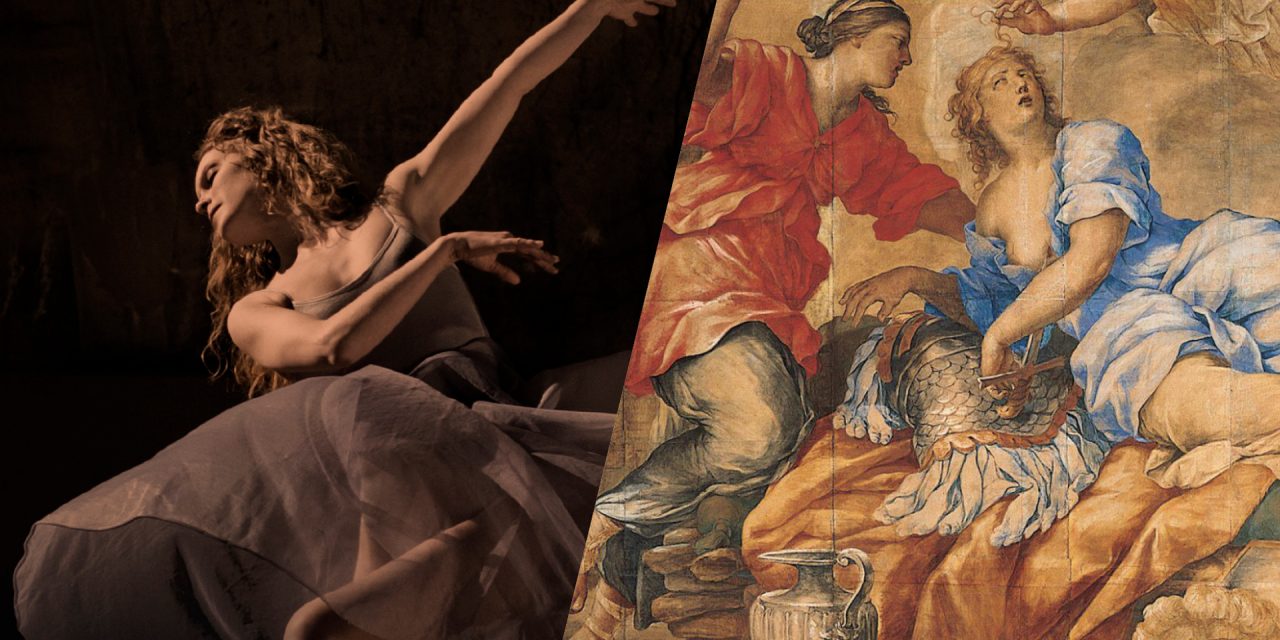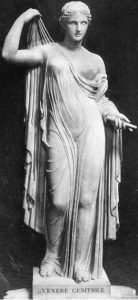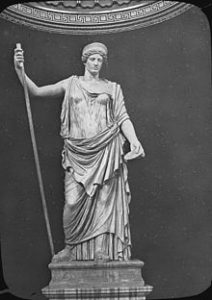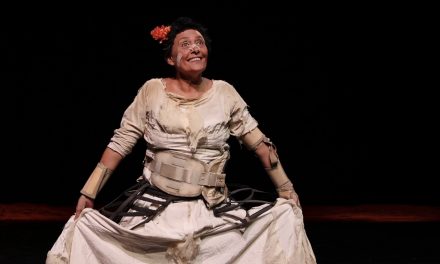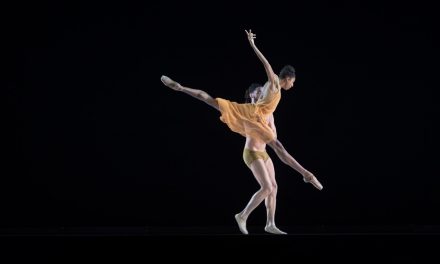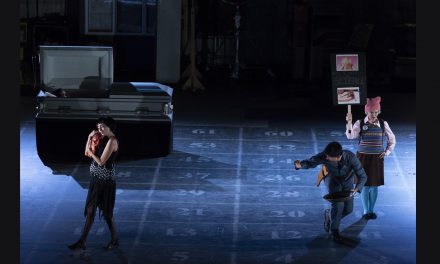On March 16, 2019, The Norton Simon Museum presented Fate and the Heroine: Dido, Queen of Carthage created and performed by the Nancy Evans Dance Theatre. The work was inspired by the story of Dido and Aeneas as described in Virgil’s epic poem The Aeneid (written between 29 and 19 BCE) and the beautiful illustrations called cartoons by Renaissance artist Giovanni Francesco Romanelli. The cartoons depict scenes from this tragic tale of love, betrayal and suicide and are currently on display at the Norton Simon Museum in its exhibit Once Upon a Tapestry: Woven Tales of Helen and Dido curated by Gloria Williams Sander.
Nancy Evans is the Artistic Director of the Nancy Evans Dance Theater founded in 2009. Evans was contacted by Sander over a year ago and Evans set about researching the story of Dido and Aeneas, reading Virgil’s very lengthy poem and selecting music composed during the same era as Romanelli’s cartoons. The final work that resulted from her research and creative efforts was beautiful, inspiring and informative.
With two narrators (Nancy Evans Doede and Helene McCardle) and an all-female cast, Evans focused entirely on Dido and her story. We never saw, but only heard about Aeneas. He was depicted entirely within the narration and seen only on two of the four projections of Romanelli’s cartoons: Dido Showing Aeneas Her Plans for Carthage and Royal Hunt and Storm.
We were first introduced to the cast of characters via spoken word. The two goddesses Venus (Jenn Logan) and Juno (Karina Francis Jones), Dido (Ashleigh Doede), Dido’s sister Anna (Katrina Amerine), and Dido’s handmaidens (Jen Hunter and Noel Dilworth). Evans stays true to the era with striking classical movements, performed especially well by Ashleigh Doede, Katrina Amerine and Jenn Logan. Evans does introduce recurring modern dance movements from her training with Hanya Holm and Nancy Hauser, but they only appeared when appropriate. One recurring movement was a Graham contraction used as an omen foretelling Dido’s suicide by Venus’s sword.
Juno was an ancient Roman goddess, the protector and special counselor of the state. A daughter of Saturn, she is the wife of Jupiter and the mother of Mars, Vulcan, Bellona and Juventas. Venus was a Roman goddess, whose functions encompassed love, beauty, desire, sex, fertility, prosperity and victory. In Roman mythology, she was the mother of the Roman people through her son, Aeneas, who survived the fall of Troy and fled to Italy. There were sections where the two goddesses appeared and danced as women, and as statues of worship, moving only to influence Dido’s actions. Throughout, Venus and Juno sought different fates for Dido and from the city of Rome, but it was Venus who triumphed.
Evans chose two shawls to act as symbols for her dance theater piece. A large deep red shawl with sparkling glitter moved between being a symbol of love, marriage and finally, Dido’s blood. A smaller black scarf placed across the arm of Juno became the symbol of betrayal and death.
In one memorable section, Dido seeks advice from her sister Anna. The dancing is beautifully executed by Doede and Amerine as they move through unison and mirroring phrases, high leg extensions and gestures that reflected their close relationship.
Jenn Logan was wonderful as Venus not only through her dancing but via her subtle facial shifts to inform us of Venus’s thoughts. It was excellent acting. We watched as she slowly planted the seeds of suicide into Dido’s mind while Dido played a game with her sister and handmaidens, and later when she placed the red veil over Dido’s head. Jones made a powerful Juno and even resembled some of the drawings of Juno that I came across during my research.
Using only a single, small platform with stairs on three sides onstage, Evans wove together the tale of Dido grieving the loss of her first husband who was murdered by her brother Pygmalion, falling in love again with Aeneas, his betrayal, and Dido’s self-inflicted death through ten expertly constructed sections. She filled in the story’s details with narrations and projections but conveyed Dido’s tragic life through exquisite movement and theater. Evans’ choreography never strayed from the story to highlight her talented company but utilized their talents to paint her own tapestry. It was a tapestry that told the woman’s view of Dido’s life, power, love, betrayal and death.
Marlee Candell designed and constructed the attractive costumes whose colors expertly reflected the style and hues of Romanelli’s cartoons and the other stunning tapestries in the exhibit. The set was constructed by James Doede.
Narrator Helene McCardle has worked as an actress around the country and while in Los Angeles, she has been a part of The Actors’ Company, a founder of the Los Angeles Women’s Theater Festival and a founding member of Outpost Theatre Ensemble. She and Evans have worked together for approximately 25 years.
For those of us in the audience (and the theater was full) it was a visually beautiful union of dance, theater and art. Thank you to the Norton Simon Museum and to Curator Gloria Williams for collaborating with the Nancy Evan Dance Theatre to bring about this extraordinary event, Fate and the Heroine: Dido, Queen of Carthage.
For more information on the Nancy Evans Dance Theatre, click here.
To learn more about the exhibits at The Norton Simon Museum, click here.
Featured image: Flyer for Fate and the Heroine: Dido, Queen of Carthage – Photo courtesy of the Norton Simon Museum.

